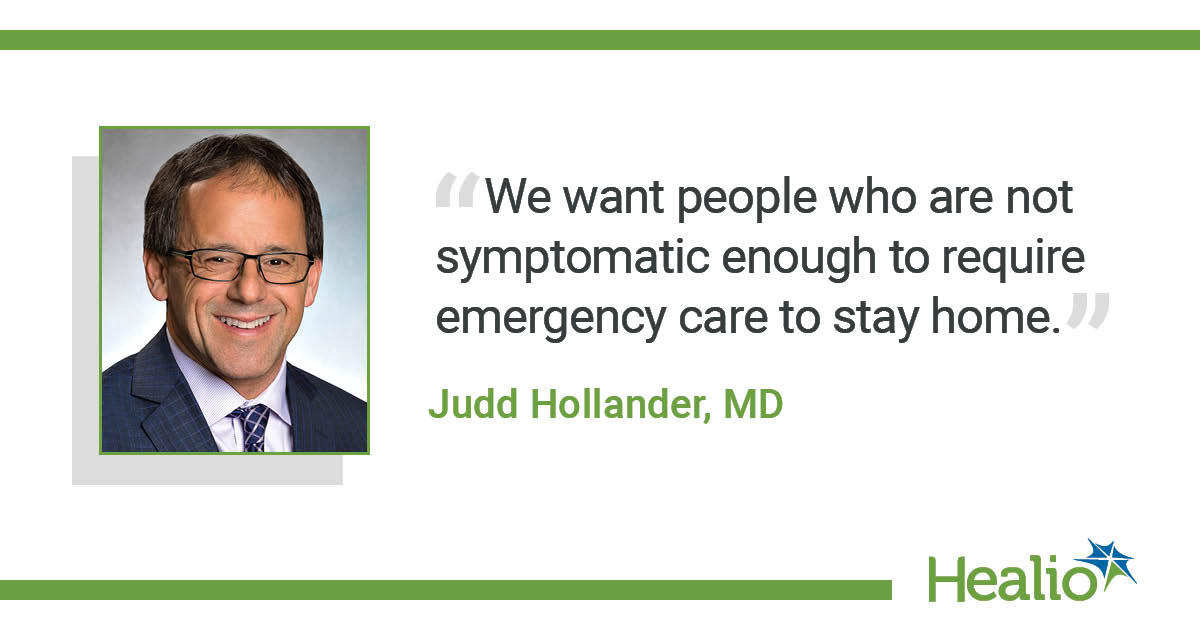‘People need to stop dragging their feet’: Using telehealth during COVID-19 pandemic
Click Here to Manage Email Alerts

As the COVID-19 pandemic continues to spread across the United States, increasing numbers of practices and hospitals are turning to telehealth to safely care for patients.
Recently, Medicare announced it would be expanding reimbursement for office, hospital and other telehealth visits in the United States to help slow the spread of the novel coronavirus. Before this expansion, Medicare only provided limited telehealth payments, including for patients living in rural areas.
“Medicare beneficiaries across the nation, no matter where they live, will be able to receive a wide range of services via telehealth without ever having to leave home,” CMS Administrator Seema Verma said during a White House press briefing. “And these services can also be provided in a variety of settings, including nursing homes, hospital outpatient apartments, and more.”
The AMA expressed its support for the measure in a statement from its president Patrice A. Harris, MD, MA, in which she noted that telehealth is critical to both managing COVID-19 and maintaining care during the pandemic.

“The AMA encourages any private payers that are not already covering telehealth services to remove those limitations now,” she said. “The AMA stands ready to help physicians expand their use of telemedicine and continues to invest in resources that provide physicians with a proven path for integrating telemedicine and digital health technologies into patient care.”
Although the importance of telehealth has begun to receive national attention during the COVID-19 pandemic, many institutions have used it for years.
Jefferson Health, a health care system in the Philadelphia area, has implemented a systemwide telehealth program in the practices and hospitals for the last 5 years.
JeffConnect
Jefferson Health’s telehealth program, known as JeffConnect, allows providers to communicate with their colleagues and directly consult with their patients in video visits that are conducted online through a computer, an iPhone or iPad, or Android device.
The program also allows patients to schedule appointments and communicate directly with an on-demand ED physician.
Judd Hollander, MD, senior vice president of health care delivery innovation at Thomas Jefferson University, noted that the program is unique from others in that it includes only physicians within the Jefferson Health system.
The JeffConnect program allows patients to visit their regular physicians in all specialties, as all physicians “have the ability to do telehealth with their own patients,” Hollander said.
Handling infections like COVID-19
Telehealth has multiple benefits for physicians and patients alike in terms of preventing the spread of infections like COVID-19 and influenza, Hollander explained.
Through telehealth, patients can stay home and schedule a virtual visit with their regular physician or an on-demand physician instead of presenting at a clinic and potentially exposing themselves or others to infection.
“We don’t want people to come to the emergency department unless they’re really sick,” Hollander said. “We don’t want people to get on buses. We don’t want people to get on trains. We want people who are not symptomatic enough to require emergency care to stay home.”
He noted that patients with symptoms of infection who do present at the ED or an urgent care center are handed an iPad that they can use to communicate with the physician while alone in a private room, which “can limit the number of people who come in and out.”
Hollander explained that if the pandemic in the United States reaches the scale of that in other hard-hit countries like China and Italy,, then physicians will need to figure out how to manage caring for patients with coronavirus in addition to all their other patients.
Using their telehealth program, Jefferson Health physicians can still safely see most of their patients — those with coronavirus and those with prescheduled visits.
Physicians may not have the capacity to test everyone with COVID-related symptoms or concerns about exposure, according to Hollander. Therefore, approaches for COVID-19 testing could be similar to current strategies for influenza where testing is prioritized in certain people — like those who are hospitalized. Otherwise, patients can quarantine and treat themselves at home, he said.
Cost of telehealth implementations
There is concern among payers that telemedicine will drive costs because patients will find it convenient to use and engage in care more often, according to Hollander. However, he disagrees with that theory.
“Primary care providers are only going to spend so many hours a day seeing patients,” he said. “It doesn’t matter whether they see them in person or via telemedicine. So, I don’t think it’s possible for telemedicine to really drive up costs. Most physicians are at capacity now, and I don’t think they’re going to add increased capacity, which is what the payers like to talk about as an excuse for not funding it now.”
Despite the amount of time and upfront costs for training and infrastructure that is required to establish a telehealth program, Hollander said it can reduce costs to patients who typically would have to pay for things like traveling and parking when presenting to the office. It would also reduce costs to physicians themselves, who can work from home instead of going to the office.
Hollander explained that as telehealth is likely to be a standard way to treat patients in the coming years, “people just need to stop dragging their feet.”
“We now have a sense of urgency to do it, and I pray that we’re overreacting in getting all these things ready and we don’t need it, but on the other hand, hope is not a very good strategy,” he said. – by Erin Michael
References:
Jefferson Health. JeffConnect. https://hospitals.jefferson.edu/jeffconnect.html. Accessed March 23, 2020.
White House. Remarks by President Trump, Vice President Pence, and Members of the Coronavirus Task Force in Press Briefing. https://www.whitehouse.gov/briefings-statements/remarks-president-trump-vice-president-pence-members-coronavirus-task-force-press-briefing-4/. Accessed March 23, 2020.
Disclosures: Hollander reports no relevant financial disclosures.

